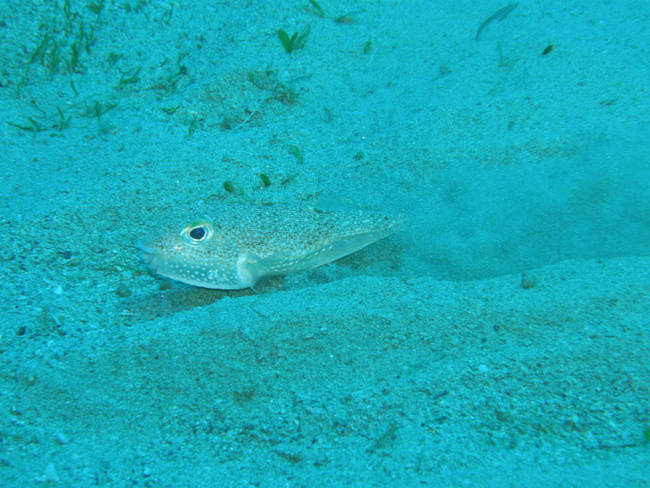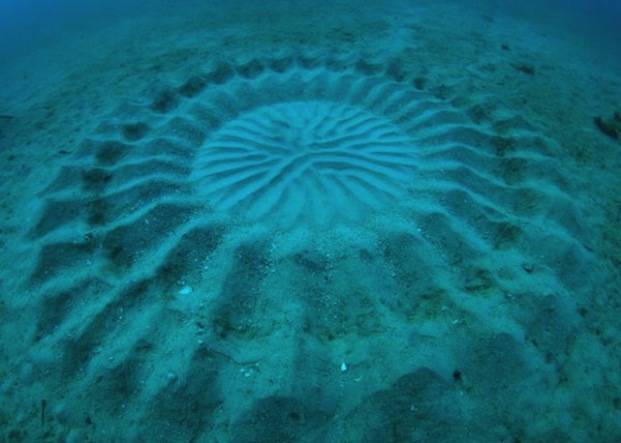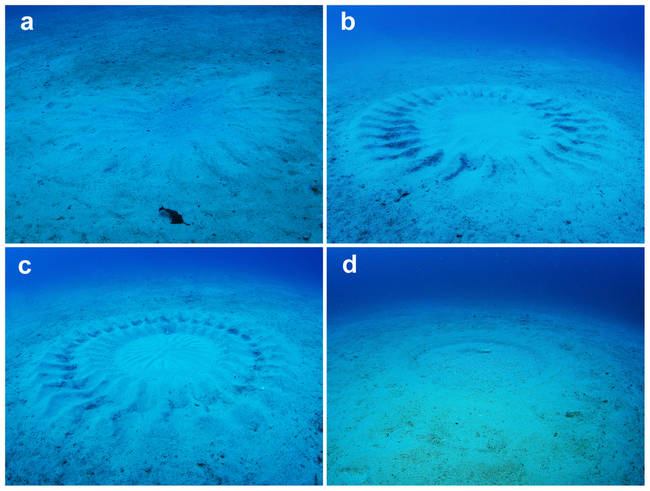While swimming in the waters off Japan in the mid-90s, some divers noticed what they could only describe as “crop circles,” symmetrical, geometric patterns in the sand of the sea floor. As the sands shifted, they would disappear, only to reappear again some time later. For about a decade, no one could figure out these mysterious formations.
Then the creators of this sand art emerged: it was a newly discovered species of pufferfish, and they were engaged in the age-old art of seduction. It was found that the males of the species create these patterns in an effort to impress the females. It’s no easy task, but apparently female pufferfish are astute art critics, so the males, who measure only about five inches long (and they’re very cute), labor tirelessly to create designs that span some seven feet in diameter. The designs are created by the fish slapping the sand and sediment of the sea floor to create surprisingly even rippling formations, and the process can take up to nine days.
When the creation is complete, the females swim by for a look. If they like what they see, the rest is history–at least for this mating cycle, anyway. Fish are not known for their lasting romances. However, researchers like Hiroshi Kawase, the curator of the Coastal Branch of the Natural History Museum and Institute in Chiba, Japan, still don’t know what makes a circle appealing or unappealing. It seems humans just don’t have the refined taste in sand art that pufferfish do. It’s possible, though, that the females are looking for a sand circle that provides the best protection for their eggs; when they decide on a circle they like, they lay their eggs in the center.
The pufferfish’s activities have been likened to the bowerbird, as the ridges in the sand formations are decorated by the males with bits of shells. Scientists have also noticed that the ridges and grooves of the designs channel the water currents in a certain way that makes the water at the center, where the eggs are lain, about 25% calmer than the surrounding water. It’s possible, says researcher Alex Jordan of the University of Texas at Austin, that the radiating lines that the human eye finds so interesting are coincidental. “The beautiful lines and structure could serve only to channel those particles to the center, and have no aesthetic purpose.”
The details of the pufferfish’s mating rituals are still being researched, and perhaps one day we’ll have an answer to how this behavior came about and why it’s so important. Until then, divers off Japan’s coast will have to be satisfied with simply appreciating these beautiful creations on the sea floor.
Via LiveScience
 share
share
 share
share
 share
share



